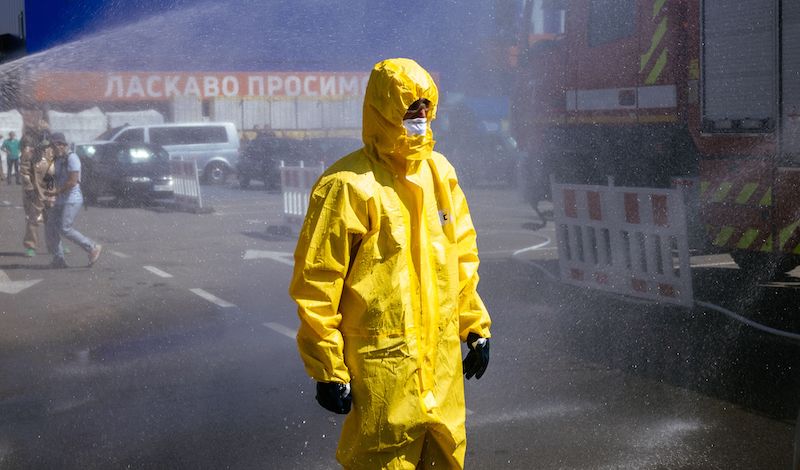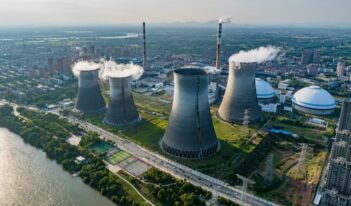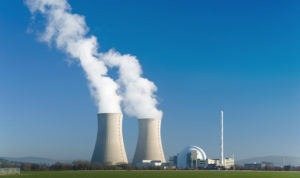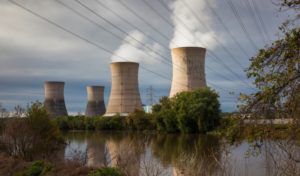
International nuclear oversight body condemns Russia for occupation of nuclear power plant and demands immediate withdrawal.
Since the early days of war in Ukraine, Russian forces have occupied Europe’s largest nuclear power plant in Zaporizhzhya, Ukraine, where persistent shelling could cause catastrophic consequences.
In the event of a nuclear emergency, any sovereign state may request assistance from the International Atomic Energy Agency (IAEA). In February of this year, Ukraine did just that.
The IAEA, an independent international organization within the United Nations, has condemned the Russian occupation and sought to promote the safety and security of the Ukrainian power plant through diplomatic missions to the United Nations, resolutions by policy-making bodies, and the creation of tailored, and timely, industry standards about how to operate facilities during military conflicts.
“We are playing with fire,” IAEA Director General Raphael Grossi said, as he called for demilitarizing the nuclear power plant and establishing a nuclear safety and security protection zone. The IAEA Board of Governors—a policy-making body composed of representatives from 35 countries—also passed a resolution by an overwhelming majority calling for Russia to cease all military operations at the nuclear power plant because of the dangers posed to Ukraine, neighboring states, and the international community.
And yet continued shelling directed at or from the nuclear plant has periodically disabled the facility’s connection to Ukraine’s electrical power grid, risking a radioactive leak.
Although the plant’s staff members have shut down all nuclear reactors, remaining nuclear material that had powered those reactors continues to produce substantial amounts of heat. If the plant is unable to cool the reactors, which will happen if the plant loses power, the heat from nuclear decay could melt the vessels holding the reactor cores, resulting in a nuclear meltdown and likely widespread radioactive poisoning.
Recognizing the unprecedented nature of a military occupation at a nuclear power plant, the IAEA has for the first time developed standards around nuclear safety amid armed conflict. These standards involve seven pillars, which include continual assessment and supervision of a facility’s physical integrity, staff ability to conduct their duties, and off-site power supply.
IAEA experts claim, however, that recent shelling of the Zaporizhzhya plant has breached essentially every pillar for nuclear safety and security.
To assess the situation and attempt to reestablish the seven pillars, the IAEA Director General led a mission of agency experts to Zaporizhzhya in September. Performing “urgent safeguards activities” on plant facilities, the IAEA has since stationed two experts at the plant indefinitely for further independent observation of the situation.
“The armed forces of Ukraine continue to shell the territory,” Permanent Representative of Russia to the United Nations, Vasiley Nebenzya said, contesting Ukraine’s ownership of the Zaporizhzhya nuclear power plant and blaming Ukraine for the “real risk of a radiation accident” that may cause “catastrophic consequences for the entire European continent.” Notwithstanding claims that Russian forces have harassed Ukrainian staff, Representative Nebenzya suggested that there exists a “healthy working atmosphere” between the Ukrainian plant staff and the Russian armed forces, asserting that “no one is harassing anyone.”
Some international nuclear agencies and experts, however, disagree with Representative Nebenzya’s characterization of Ukraine’s culpability. The World Nuclear Association, an industry association with a global mandate to promote nuclear energy, along with eight other nuclear energy organizations, has called for the immediate withdrawal of Russian forces from Zaporizhzhya and supported the IAEA’s seven pillars of nuclear safety in armed conflict.
Directors of the Global Partnership Against the Spread of Weapons and Materials of Mass Destruction, an international initiative led by seven advanced democracies, also reaffirmed Ukrainian ownership of the Zaporizhzhya nuclear power plant and demanded the immediate withdrawal of Russian forces.
Although the IAEA’s ongoing presence inside an active combat zone is apparently unprecedented, the IAEA is no stranger to working within war zones. The IAEA inspected nuclear facilities in both Iran and Iraq during the Iran-Iraq war as well as in war zones around Yugoslavia. But former IAEA Deputy Director General Olli Heinonen has said that the situation at the Zaporizhzhya nuclear power plant is more serious given that the plant is at the frontlines of conflict in a more intensive war.
Organized as an agency dedicated to “atoms for peace,” the IAEA finds itself in extraordinary wartime circumstances. But through the efforts of the agency’s Director General, Board of Governors, and nuclear experts, the IAEA remains committed to the safety and security of the Zaporizhzhya nuclear power plant in Ukraine.



